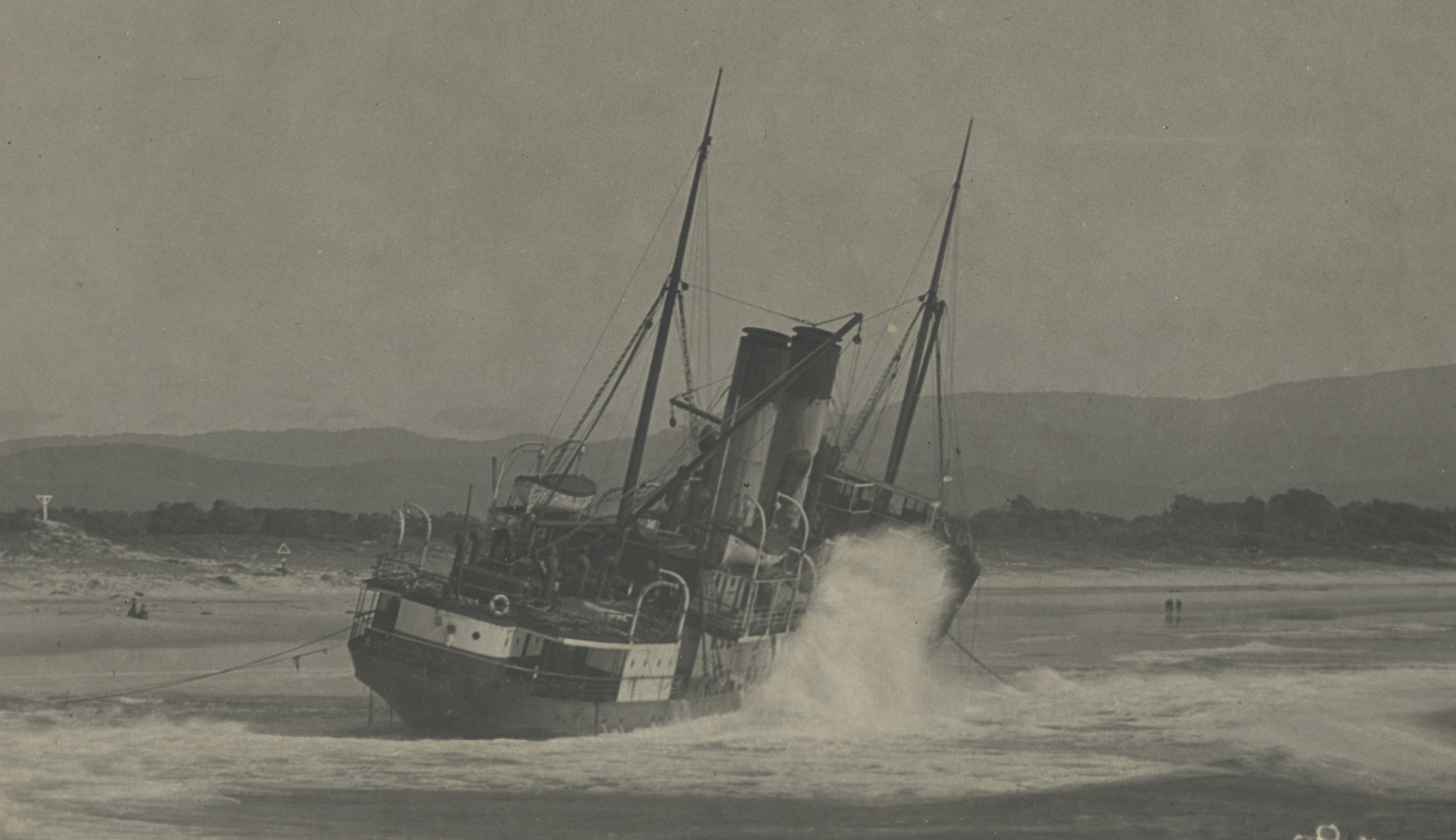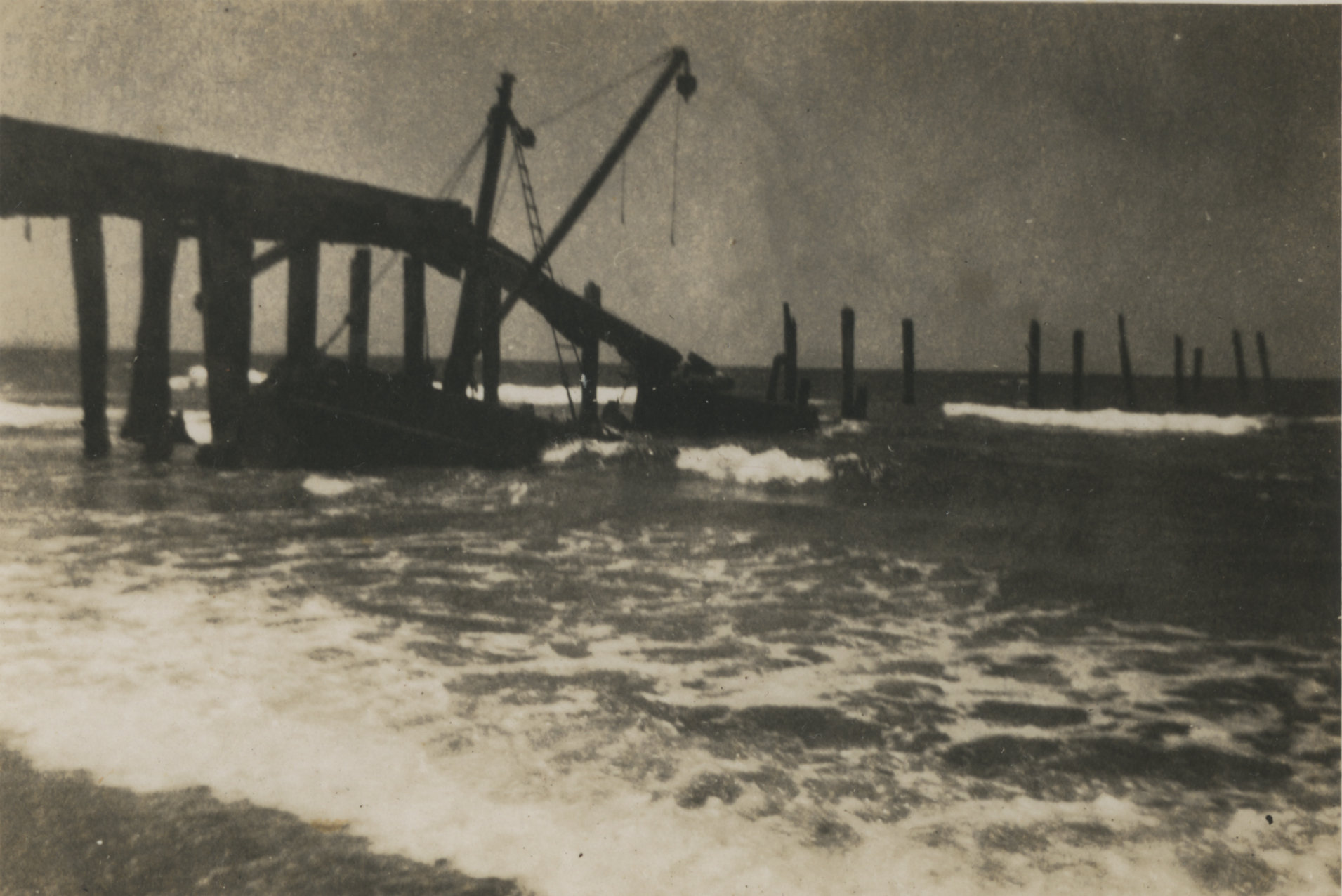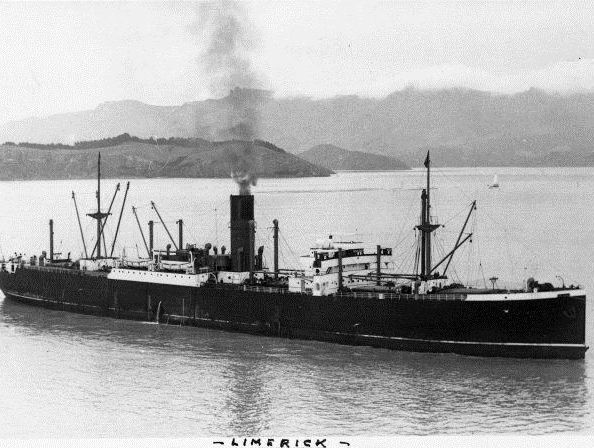Site 16: Shipwrecks
PREV NEXT
Ships were the only effective transport along the Northern Rivers coast until the railway arrived in Byron Bay in 1894 but there is no safe natural harbour along this coast. Byron Bay was identified as the safest deep-water anchorage. A deep, artificial sea-port protected by a five-metre-high break-wall extending from Cape Byron to Julian Rocks and a similar one extending from Belongil Creek toward Julian Rocks was proposed but never built. A timber jetty extending 300 metres into the sea from the end of Jonson Street was completed in mid-1888.
Prior to completion of the lighthouse in 1901 more than sixteen wrecks and the loss of many lives occurred along the Byron Coast. Perhaps the luckiest survivors were the two passengers from the Swift who were cut from the overturned hull on the beach by passers-by after it ran ashore south of Brunswick Heads.
But the most famous wrecks at Byron Bay were of the Wollongbar in May 1921, the Tassie III in June 1945 and the torpedoing of the Limerick and the Wollongbar II by a Japanese submarine in April 1943.

Early in the afternoon of Saturday 14 May 1921 the fully-laden Wollongbar was tied up alongside the old jetty about 200 metres offshore. It was ready to board crew and passengers for departure to Sydney at 5.00pm. In the large waves, strong winds and low tide the ship’s keel began bumping the seabed. The captain cast off to head into deeper, safer water. However, as the moorings were freed the ship grounded on a sand bar and turned broadside to the large waves. Several times the vessel’s bow was turned back toward the sea but each time the ship encountered the sandbar, stalled, and was pushed closer to land. Eventually the wind, waves and current prevailed and the ship stranded in the surf on Belongil Beach with no lives lost. Its cargo of butter, bacon and bananas was off-loaded or jettisoned.
The Tassie III, a 120 tonne, steel ship requisitioned by the US Army and carrying condemned ammunition came into Byron Bay on the night of 8 June 1945 to anchor from a storm. During the night the ship dragged its anchor and beached. Next high tide the ship refloated and washed up against the “old jetty”. In the rough weather the Tassie III broke the jetty piles, the stumps penetrated the hull and the vessel sank with all munitions ion board.

Wreck of the Tassie III against the jetty in 1945. (Source Byron Shire News)
The closest enemy attack to Byron Bay in World War II was the torpedoing and sinking of the Limerick 32 kilometres off Cape Byron by Japanese submarine I-126 on 26 April 1943 in WWII.

MV Limerick (Source Northern Star)
All but two of the 72 crew survived.
On 29 April 1943 the Wollongbar II, the sister ship of the Wollingbar, was torpedoed and sunk south of Byron Bay by Japanese submarine 1-180. Two torpedoes hit the ship in quick succession breaking it in two. Both pieces sank within minutes giving those on board little chance of escape. Only five crew of 37 survived. The captain and many others that died were from Byron Bay.
But it was the cyclone of February 1954 that destroyed the greatest number of vessels when 23 of 32 fishing boats hauled onto the “new” jetty out of harm’s way were wrecked as the storm destroyed much of the jetty. That cyclone also marked the end of Byron Bay as a port.